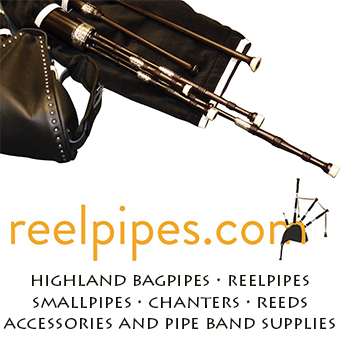Those of us old enough to have played cane practice chanter reeds will testify to the superiority of them over plastic reeds. Yet, by the late 1970s, plastic was rapidly becoming the preference for pipers and it seems that these days it is extremely difficult to source cane reeds.
In the November 1979 Piping Times, David V. Kennedy of California made the case for cane. His points remain valid today and we can only hope his article creates interest – and a demand – for cane practice chanter reeds.
By David V. Kennedy
To my utter horror, the advance of plasticity has almost overcome natural cane for practice chanter reeds. The advocates of plastic reeds advance the argument that “they are as good as cane ones and last much longer”. I have tried both, and with few exceptions, have found that plastic reeds are

- inflexible,
- out of pitch,
- hard to blow, and
- have poor quality tonality,
It’s probably true that the plastic tongues do outlast cane; but the bindings on the staple do not, and, as a matter of fact, may be shorter lived than on the cane reeds’ staples because moisture is not absorbed by the plastic blades (as it is by the cane blades) and does tend to get into the plastic reed bindings more readily than with the cane bindings.
By flexibility, mentioned above, I refer to two things: 1) the ability of the player to blow up or down in pitch with a cane reed, which I find impossible to do with the plastics, and 2) the ability of the piper who knows reeds to “manipulate” his cane reed.
Manipulation is herein defined as
- scraping the cane,
- squeezing the cane,
- cutting the tip off when necessary,
- wetting the cane to adjust pitch and general handling of the teed, and last but not least
- being able to insert an icepick into the staple to open up the blades of a tired old reed and give it a temporary new life.
When I was at recent piping summer school in California, a fellow piper saw my practice chanter cane reed, and asked me jocularly, “Dave, are you preserving that one for a museum?” The reed in question was a year old, and had many hours of playing on it. It had a grey-black, saturated look about it and prima facie one might have said that, “It can’t play a note”.
Not so! That reed had the fine low-pitched mellow tone of the mature cane, was on perfect pitch, and even elicited a favourable comment from no less than John Burgess, a piper not usually given to scattering praises around on subjects like reeds and pipes!
The same reed could be transferred to a Lawrie chanter (of mature vintage also); a Wallace chanter (probably not known in Scotland, but made by a Scot who lived in Sacramento, California, some years ago who used the Henderson specifications for his pipes); a Boer War chanter of unknown name — so I presume to say that it was (and still is) a grand, ubiquitous reed.

But the real test of cane versus plastic is when you have six or seven pipers playing their practice chanters together, and you hear them all ring true in unison at the correct pitch; and this I believe, is because they can all adjust the pitch of their reeds by blowing up or down.
I feel fortunate that I have a fine reed-maker in Leicester, England, who still makes good practice chanter cane reeds. I am hopeful that other reed-makers will come back into the fold once again and start making cane reeds. Of course, if pipers of stature are satisfied with the squinks and squawks and off pitch and lack of quality of the plastic reed, why should reed-makers trouble to make up cane reeds? The concept that the practice chanter is “just for practice” and “we only worry about tone when we get to the piob mhor” is a horrid thought. But it exists amongst pipers who should know better. Let’s get off that route and back to the older, tried and true sounds of a practice chanter cane reed!
* From the November 1979 Piping Times.


